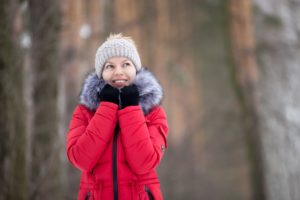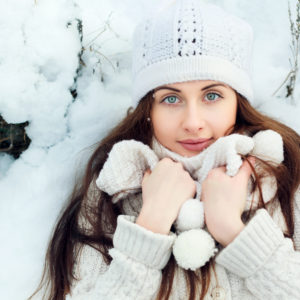Brr! In need of some ideas to keep the kids entertained this winter? Here’s a roundup of several great local blogs full of suggestions for spending the day exploring DC both before and after the holidays. Continue reading
Tag Archives: winter
Fun with Gingerbread
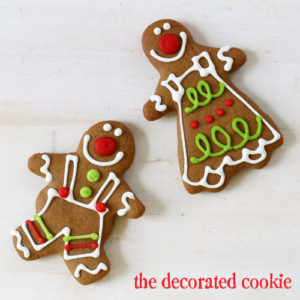
Gingerbread boys and girls and a history of gingerbread cookies. Source: The Decorated Cookie
Gingerbread is an important part of many cultures’ holiday celebrations. Gingerbread men, gingerbread houses, and even gingerbread-flavored coffee are just a few of the yummy treats available this time of year. DC-based cookie guru Meaghan Mountford details the history of gingerbread cookies on her fabulous website, The Decorated Cookie.
Gingerbread Books
The story of the Gingerbread Boy has been retold in many versions. Head to your local library and check out a few of these fun books:
- Gingerbread Baby by Jan Brett.
- The Cajun Gingerbread Boy illustrated by Berthe Amoss
- The Gingerbread Boy by Richard Egielski
- The Gingerbread Boy by Paul Galdone
- The Gingerbread Man: An Old English Folktale illustrated by John A. Rowe
- The Gingerbread Man illustrated by Karen Schmidt
- The Gingerbread Man illustrated by Pam Adams
- The Gingerbread Man by Eric Kimmel
- The Gingerbread Man retold by Jim Aylesworth
Make Your Own Gingerbread Cookies
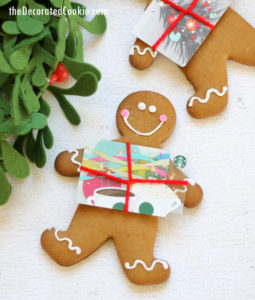
A gingerbread man gift card holder adds a bit of homemade love to standard gift cards. Source: The Decorated Cookie
Excited to make some of your very own gingerbread? Below is a recipe for gingerbread cookies. (Don’t forget to use American measurements and temperature settings!)
Preheat oven to 350F
In a large bowl, sift together:
- 3 cups flour
- 1 teaspoon baking soda
- ¼ teaspoon salt
- 1 teaspoon cinnamon
- 1 teaspoon ground ginger
- 1 teaspoon ground cloves
- 1 teaspoon nutmeg
In a smaller bowl beat together:
- ¾ cups brown sugar
- 6 tablespoons butter
- 1 egg
- 2/3 cup of molasses
- 1 teaspoon vanilla
Stir the dry ingredients into the creamed mixture. Cover and refrigerate for one hour. Roll out on a lightly floured surface and cut out cookies. Bake on a greased cookie sheet for 8-10 minutes. Place on a rack to cool. Decorate.
Gingerbread Fun Without the Baking
If you aren’t a baker, head to almost any store (Target, 5 & Below, Safeway, Giant, Harris Teeter are just a few) to buy a kit to make a gingerbread house, It will include everything you need ~ just add your imagination!
Even More Gingerbread Ideas
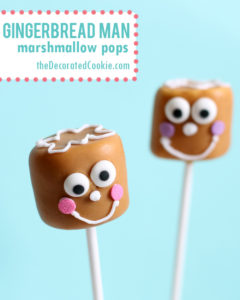
Quicker and easier to make than gingerbread cookies, try gingerbread man marshmallows for Christmas. Source: The Decorated Cookie
Or if you’re ready to take your gingerbread to the next level, The Decorated Cookie has loads of fun ideas. If you decide to try any of these projects out, be sure to post pictures on our cluster group page on Facebook.
Avoiding Homesickness this Holiday Season
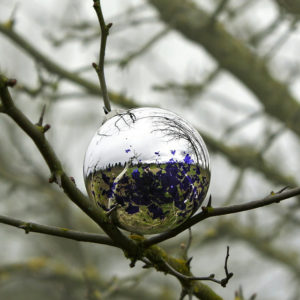 Homesickness can be a problem during the holidays, even if it hasn’t been at any other time of the year. Au pairs often miss their friends and family, familiar places and their own traditions and customs. The holiday activities in the United States seem, and may actually be, different just at a time when an au pair would welcome something familiar.
Homesickness can be a problem during the holidays, even if it hasn’t been at any other time of the year. Au pairs often miss their friends and family, familiar places and their own traditions and customs. The holiday activities in the United States seem, and may actually be, different just at a time when an au pair would welcome something familiar.
It is common for au pairs’ emotions to be close to the surface during the holidays. Her highs are higher, her lows are lower. The enormity of what she has done–actually living in another country (which is an amazing thing when you think about it!)–hits her and throws her into a self-protective mode.
Host parents can help her through this unfamiliar territory by talking to her about what your specific family activities will be (gifts, meals, visitors, religious services, in-home traditions, or none of these, as the case may be.) In the spirit of cultural exchange, ask her if she has any favorite holiday traditions or foods that you might be able to incorporate into your family’s celebration of the season. Let her know what you will be doing, when you will be doing it, and what she can expect. Talk to her about what has to be accomplished and get her involved and interested. Don’t expect her to just “know” what needs to be done. Give her some clear, agreed upon assignments. Make her feel a part of things. And, let her know her contribution is needed and appreciated.
Photo: Sheila Sund (Flickr)
December 2017 Calendar Ideas
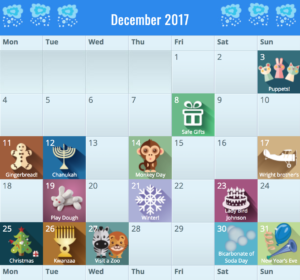 Each month, Au Pair in America provides a calendar full of fun activities and helpful information for everyone in the family.
Each month, Au Pair in America provides a calendar full of fun activities and helpful information for everyone in the family.
Christmas 2017
We have host families from a wide variety of backgrounds and faiths; some of our host families celebrate Christmas, some celebrate Hanukkah, some celebrate Kwanzaa, and some celebrate more than one holiday or none at all. If you’re an au pair living with a host family who celebrates Christmas and you do not, I encourage you to take part and experience it with them. This can be a great opportunity for learning and culture sharing. I also encourage host families to ask their au pairs to share their holiday traditions and customs.
History
Christmas is both a sacred religious holiday and a worldwide cultural and commercial phenomenon. For two millennia, people around the world have been observing it with traditions and practices that are both religious and secular in nature. Christians celebrate Christmas Day as the anniversary of the birth of Jesus of Nazareth, a spiritual leader whose teachings form the basis of their religion.
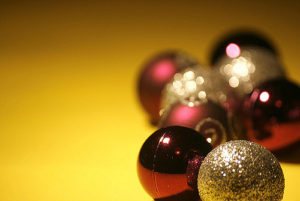
Image: Alan Cleaver (Flickr)
In the United States, popular customs include exchanging gifts, decorating Christmas trees, attending church, sharing meals with family and friends and, of course, waiting for Santa Claus to arrive. December 25–Christmas Day–has been a federal holiday in the United States since 1870. (Source: History.com)
Christmas Traditions in the US
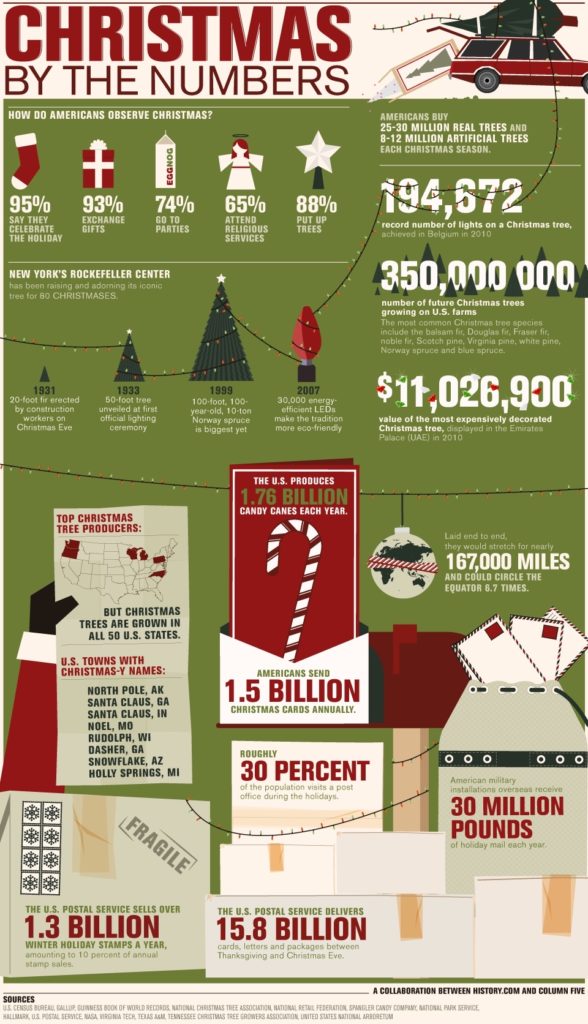
Infographic: History.com
In the US, Americans celebrate Christmas with traditions that have been introduced from different cultures as well as some uniquely American celebrations.
- The period of time in the US from Thanksgiving through New Year’s Day is called “the holidays.”
- Decorated Christmas trees begin lighting up windows in homes, and shops and outdoor plazas shortly after Thanksgiving.
- Christmas tree ornaments can be found in almost every store, but many families have boxes of treasured ornaments made by children out of paper and other crafts which are lovingly hung year after year.
- Christmas lights decorate trees indoors as well as the front lawns and porches of houses. Many parks have special holiday light displays.
- Children write letters to Santa Claus requesting gifts. Shopping malls, parties, churches, and some schools host events where children can have their photo taken with Santa Claus and ask him for gifts in-person.
- Christians remember the birth of Christ with nativity scenes displayed on church lawns, Christmas pageants performed by children in churches and some schools, and delicate, often handcrafted manger scenes set out among the Christmas decor at home.
- On December 24, Christmas Eve, many families have special traditions and often attend Christmas Eve church services. Children hang Christmas stockings, leave cookies and milk for Santa Claus, and try their best to fall asleep so Santa can deliver their presents.
- On December 25, Christmas Day, children wake up early to see the gifts Santa Claus left them. Families exchange gifts, which have been wrapped and placed under the Christmas tree.
- Americans mail Christmas and holiday cards (often with photos of the family) throughout the holiday season. In 2010, Americans mailed 1.5 billion holiday cards.
-

Source: Moo.com
Many Americans view the same beloved Christmas movies year after year. Some classic favorites include, “A Charlie Brown Christmas,” “It’s a Wonderful Life,” “The Christmas Story,” “Home Alone,” “Rudolf the Red-Nosed Reindeer,” “Frosty the Snowman,” “The Grinch Who Stole Christmas,” “Elf” and “A Miracle on 34th Street.”
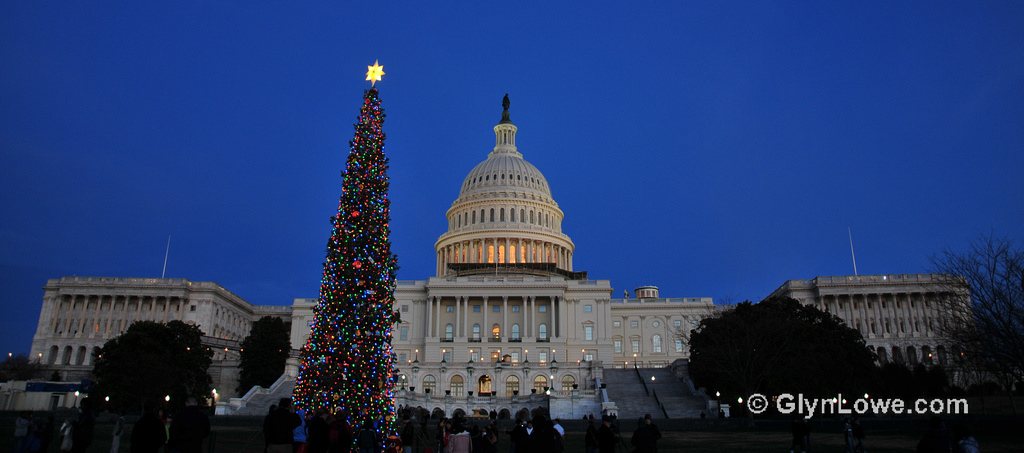
Photo: www.GlynLowe.com (Flickr)
Celebrating Christmas in Washington, DC
- Winter Wonderland: Your Guide to the Holiday Season in Washington, DC
- The 2017 KFDC Guide to the Holiday Season in DC
- December 2017 Festivals and Events in Washington, DC
A very Merry Christmas to all!
Hanukkah 2017
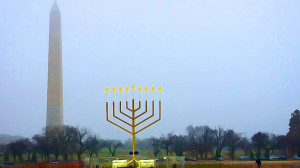
You can visit the world’s largest menorah on the Ellipse in Washington, DC. Photo: Ted Eytan (Flickr)
We have host families from a wide variety of backgrounds and faiths; some host families celebrate Hanukkah, some celebrate Christmas, some celebrate Kwanzaa, and some celebrate more than one holiday or none at all. If you’re an au pair living with a host family who celebrates Hanukkah and you do not, I encourage you to take part and experience it with them. This can be a great opportunity for learning and culture sharing. I also encourage host families to ask their au pairs to share their holiday traditions and customs.
Hanukkah is the Jewish Feast of Lights or Feast of Dedication. The Hebrew word Hanukkah means dedication. The holiday begins on the eve of the 25th day of the Hebrew Month of Kislev and lasts eight days. Hanukkah usually falls in the month of December, but occasionally can start in November. This year Hanukkah begins at sundown on Tuesday, December 12, 2017, and ends the evening of Wednesday, December 20, 2017.
How Do You Spell Hanukkah?
According to Judaism 101, the process of writing Hebrew words in the Roman (English) alphabet is known as transliteration. Transliteration is more an art than a science, and opinions on the correct way to transliterate words vary widely. This is why the Jewish festival of lights (in Hebrew, Cheit-Nun-Kaf-Hei) is spelled Chanukah, Chanukkah, Hanuka, and many other interesting ways. Each spelling has a legitimate phonetic and orthographic basis; none is right or wrong.
History
The books of the Maccabees tell the story of Hanukkah which occurred in 165 B.C. After three years of struggle, the Jews in Judea defeated the Syrian tyrant Antiochus. The Jewish people held festivities in the Temple of Jerusalem and rededicated it to God. After removing all Syrian idols from the Temple, the Jews found only one small pot of oil to light their holy lamps. Miraculously, the small pot provided oil for eight days. Judas Maccabaeus, the Jewish leader, then proclaimed a festival to be observed by Jewish people. (Source: www.apples4theteacher.com)
Hanukkah Traditions (Source: www.bhg.com)
- The Menorah
The centerpiece of the Hanukkah celebration is the Hanukkah or menorah, a candelabra that holds nine candles. Eight candles symbolize the number of days that the Temple lantern blazed; the ninth, the shamash, is a helper candle used to light the others. Families light one candle on the first day, two on the second (and so on) after sundown during the eight days of Hanukkah while reciting prayers and singing songs. The menorah — either store-bought or homemade and crafted of metal, wood, papier-mache, or clay — is filled from right to left, but lit left to right so each new candle is lit first. (Source: www.bhg.com)
- Singing Songs
Hanukkah — one of the most family-oriented of Jewish holidays — comes with its own set of carols sung around the glowing menorah. These celebrate everything from the glory of God and the ancient Temple of the Jews (“Maoz Tzur”) to the simplicity of a dreidel (see below), as in “Dreidel, dreidel, dreidel/I made it out of clay/And when it’s dry and ready/Dreidel I shall play.”
- Yummy Treats
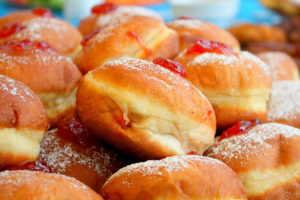
Photo of Sufganiyot (Donuts): Avital Pinnick (Flickr)
There’s nothing low-fat about Hanukkah – many of the traditional foods of the holiday are deep-fried. In honor of the oil-y miracle people celebrating Hannukah like to eat foods that are fried in oil like latkes (potato pancakes) and sufganiyot (jelly-filled doughnuts) and different fried breads. Want to have a go at making something? There are lots of recipes for yummy treats here.
- Spinning Tops
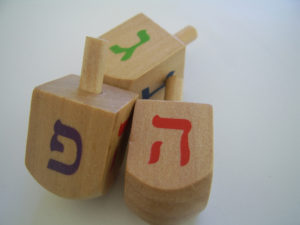
Photo: Marina Shemesh (Flickr)
It’s customary to play with dreidels (spinning tops) during the holiday, even wage gambling games in which players guess which side of the top will fall face up. Legend has it that during the Greek-Syrian dictatorship in Israel of yore, Jews got around the ban on reading the Torah by bringing spinning tops to study sessions so their oppressors would think they were just playing around. The Hebrew characters carved into the four sides of today’s dreidels are the first letters of “Ness Gadol Haya Po/Sham,” which roughly translates to “Great Miracle Happened Here/There” (depending on whether you’re in Israel or not).
Directions to play the Dreidel game
More fun and educational Hanukkah activities for children
Celebrating Hanukkah in Washington, DC
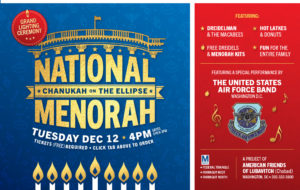
- National Menorah Lighting: Tuesday, December 12, 4 pm on the National Ellipse
The lighting of this menorah – the world’s largest – is attended by thousands every year and seen via media by tens of millions across the nation and around the world. Along with the lighting, there will be live entertainment and menorah kits and dreidels to take home. Tickets are free but must be ordered in advance.
A very Happy Hanukkah to all!
It’s Cold Out There! A 2017 Guide to DC Winter Weather
When I moved to DC from the warm South Carolina coast for graduate school, I refused to believe that winter weather would actually arrive and (even worse) stick around for several months.
That first September, I was confused by the empty hooks hanging in the back of all of the classrooms. I couldn’t imagine that in a few short months each hook would be holding a winter coat.
In October, I ignored the racks of coats and stacks of sweaters displayed in all of the stores. My lightweight jacket and jeans seemed to work just fine.
In November, I dashed to and from the car, grateful for the warmth and heat inside my house and university. “It’s just a cold snap,” I told myself.
And then it snowed.
I watched my neighbors shovel their sidewalks and head off to work. I checked the university website and was shocked that classes hadn’t been canceled. December had arrived and I was living in DC without a hat, gloves, scarf, or boots. I slipped and slid my way to my car, carefully drove to Nordstroms (marveling at the snow plows clearing the roads), and bought the only pair of snow boots left in the store.
Seventeen years later, my closet is fully stocked with coats and everything else necessary to live, work, and play in the winter. Because that’s the biggest lesson I’ve learned about living in a city with winter weather- unless we have a blizzard, people go outside in the cold weather. In fact, they even have fun outdoors.
Children love to play in the snow- and they need the exercise. Staying cooped up inside only leads to grumpiness and fights. It’s much more fun to stay outside and build a snowman. Au pairs need to be prepared to join in the excitement.
For those of you not used to this weather, I understand your dismay. However, I encourage you to take advantage of this unique experience. Embrace the cold weather months as a chance to wear sweaters, try out a pair of gorgeous boots, and experience the snow. The au pair year is over very quickly, and before you know it, you’ll be home again showing your friends and families pictures of the first snowman you ever built.
Important Tips*

Photo credit: Catherine McEaddy Holmes
Dress in Layers – Consider buying sweaters, jackets and long underwear. If you wear several layers, you can take off things to be comfortable. For example, when it might be too warm for a heavy jacket, but too cold for just a sweater, you can combine different pieces of clothing.
Set a Good Example – Host parents will expect you set the example for your kids by wearing a coat when it is cold outside. You should have a winter coat, hats, gloves, boots, and scarves. Your host kids will fight wearing a coat if you don’t wear one. Think of yourself as a celebrity and everyone wants to look like you — especially your kids.
Check the “Emergency Change of Clothes” – With young children, we often keep an emergency change of clothes in the car, diaper bag or at their school. If you haven’t already switched out the shorts and t-shirt for something warmer, now is the time to do it.
Buy Cold Weather Clothing Now – Many stores have sales this time of year. Target, T J Maxx, WalMart, and Macy’s have lots of outdoor gear in their stores. DSW has tons of warm and stylish boots and has many DC-area locations, including Columbia Heights, Friendship Heights, and Georgetown. Lands End and Amazon are great online alternatives. An even more affordable option would be to go to a thrift shop. There are many in the area and you can often find a very warm jacket for a small price compared to buying one new.
Monitor School Closings and Delays– Because DC doesn’t get as much snow as the Alps, school is often canceled or delayed when it snows just a little. Au pairs from Germany, Poland, and other cold-weather countries will laugh at the DC area’s dysfunction in the winter ice and snow. Talk with your host family now, so you can all understand the plan for these inevitable schedule changes.
(*Important Tips includes information first posted on Christine Connally’s Au Pair Chatter blog. )
Fashionably Winterized
It’s possible to look great and still be warm. Here are a few articles to inspire you:
-
Forget Weather.com: Here’s an Outfit Guide For Every Temperature
- How To Look Fashionable While Staying Warm
-
What to Wear When It’s Really Cold: 4 Outfits for Below-Freezing Temperatures
- 6 Winter Fashion Tips for Looking Good When It’s Too Cold to Deal
February is Black History Month
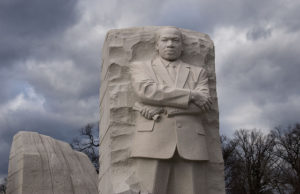
Photo: Ron Cogswell (Flickr)
Black History Month is an annual observance in the U.S. recognizing the achievements of African Americans in our nation’s history. For more information about Black History Month and some of the many contributions made by African Americans to the U.S., visit African American History Month, a dedicated website developed through a joint partnership of the Library of Congress and the National Endowment for the Humanities, National Gallery of Art, National Park Service, Smithsonian Institution, United States Holocaust Memorial Museum and U.S. National Archives and Records Administration.
DC has many celebrations for Black History Month throughout the month of February. Here’s a roundup of some of the local events taking place this month:
February 2017 Calendar Ideas
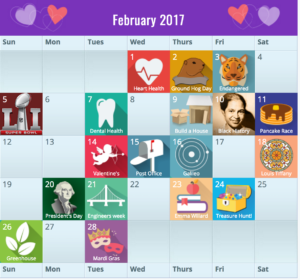 Each month, Au Pair in America provides a calendar full of helpful information and fun activities for everyone in the family.
Each month, Au Pair in America provides a calendar full of helpful information and fun activities for everyone in the family.
Making Paper Snowflakes
Cutting paper snowflakes is a fun and simple indoor winter activity. Here’s a great video showing you how to cut some of your own. Tip: For younger kids, keep the designs simple to avoid frustration.



